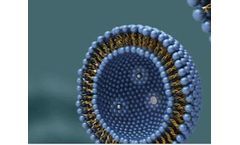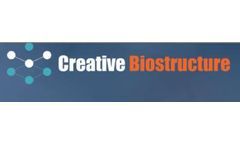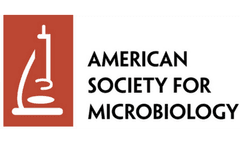Tumor Effect Articles & Analysis
20 articles found
This phenomenon offers a remarkable opportunity in cancer therapy. Tumors often exhibit mutations that can be exploited for targeted treatments. ...
Compared with traditional cytotoxins, ADCs have the advantages of strong targeting, less toxic side effects, etc. They can accurately target tumor cells, reduce side effects, and improve the therapeutic effect.ADC drugs are mainly composed of monoclonal antibodies, linkers, and small molecule cytotoxins. ...
Because nanobodies are smaller in size and have stronger tumor tissue penetration capabilities, researchers are currently applying them to ADC drugs for the treatment of solid tumors, hoping to improve the solid tumor tissue penetration effects of current ADC drugs.Nanobody StructureGenerally, the relative molecular mass of ...
Classification and function Cytokines can be classified into different groups based on their functions, including: interleukin (IL), interferon (IFN), tumor necrosis factor (TNF), colony stimulating factor (CSF), chemokine family, growth factor (GF), and TGF-β family. ...
Structurally, an ADC consists of monoclonal antibodies (Antibody) that target specific antigens on tumor surfaces, cytotoxic drugs (drugs) that kill tumor cells, and linkers (Conjugate/ linkers) that conjugate cytotoxic drugs to antibodies. ...
By comparing the toxicity of chitosan oligosaccharides with different molecular weights and different degrees of deacetylation to prostate cancer cells PC3, lung cancer cells A549 and liver cancer cells HepG2, the researchers found that chitosan with low molecular weight and low degree of deacetylation has Better anti-tumor effect. In addition, the scientists ...
OR2H1 CAR-T cells can kill lung cancer and ovarian cancer cells expressing OR2H1, but have no effect on healthy cells. In addition, OR2H1 CAR-T cells also have certain anti-tumor effect in immunodeficient mice challenged with human tumors. In lung cancer and ovarian cancer mouse models with different OR2H1 levels, the researchers ...
How to quickly and accurately translate massive tumor genomic information into safe and effective cancer targeted therapies in clinical practice is a scientific frontier today. ...
As an important member of tumor immunotherapy, LAG-3 antibodies have large future market potential. ...
Adoptive cell transfer (ACT) therapy is one of the most effective therapeutic options for tumor immunotherapy that is currently emerging in clusters. ...
Currently, some improved approaches, such as bispecific antibodies and CAR-T may break through the limitations of γδ T cells and improve the anti-tumor effect. Activation of γδ T cellsHuman peripheral blood γδ T cells primarily express Vδ2 and Vγ9 chains that are activated upon recognition of phosphorylated antigens (PAGs) such as HMBPP. ...
The ultimate goal of cancer vaccines is to fully activate the immune system so that it can recognize tumor antigens and eradicate tumor cells, and nanotechnology possesses the qualities required to do this. Nanovaccine technology, as one of the candidates for cancer immunotherapy with configurable components and sequential integration, will most likely be a ...
However, there are many special tissue damages in clinical practice, such as tissue defects after surgical resection of bone tumors or skin cancer tissues. It is necessary to remove the remaining tumor cells before repairing the tissue defects to avoid tumor recurrence. ...
ByMatexcel
A century ago, Scottish embryologist John Beard, despite not having much knowledge of enzymes, discovered that extracts from pancreatic tissues from young animals can effectively cause tumor shrinkage. Dr. Beard works in a British hospital and injects his pancreatic extract directly into a tumor, or a patient’s muscle or vein. ...
The daily intake of carotenoids in the human body is about 6 mg. Effects of carotenoids Carotenoids have a variety of biological effects. Regular consumption of foods rich in carotenoids is beneficial to health. 1. Anti-tumor effect: Dark green fruits and vegetables rich in carotenoids can reduce the incidence of ...
Scientists in academia and industry are investigating a slew of approaches for targeting tumors with a vaccine, though only a few have reached clinical trials. ...
ByCalviri
Recently, Yang Hui, a researcher at Shenzhen Institute of Advanced Technology, Chinese Academy of Sciences, developed a nanofluidic chip technology to achieve high-throughput preparation of exosome drug carriers and experimentally verify the anti-tumor effect of novel exosome drug carriers. Exosomes are nanoscale particles that can be secreted into the ...
The anthracycline antibiotic doxorubicin (DOX) is one of the most effective anti-tumour agents used to treat human malignancies. Long-term treatment with DOX is limited by its cardiotoxicity. The purpose of the present study was to evaluate the cardiotoxic effect of DOX using nanoscale. Twelve adult male rats were divided into two groups: control group, group 2A, DOX one week (DOX 1wk), group2B, ...
A common feature of tumor cells is the aberrant expression of ion channels on their plasma membrane. ...
Cancer therapy should aim to prevent recurrent disease. Surgery and toxic treatments remove only symptoms associated with cancer without trying to intervene in the aetiology, therefore the disease may recur. The autologous cancer vaccine supplemented with bio-modulation might fulfil requirements for effective tumour therapy. The autologous tumour vaccine is formed in the same way as our bodily ...
















